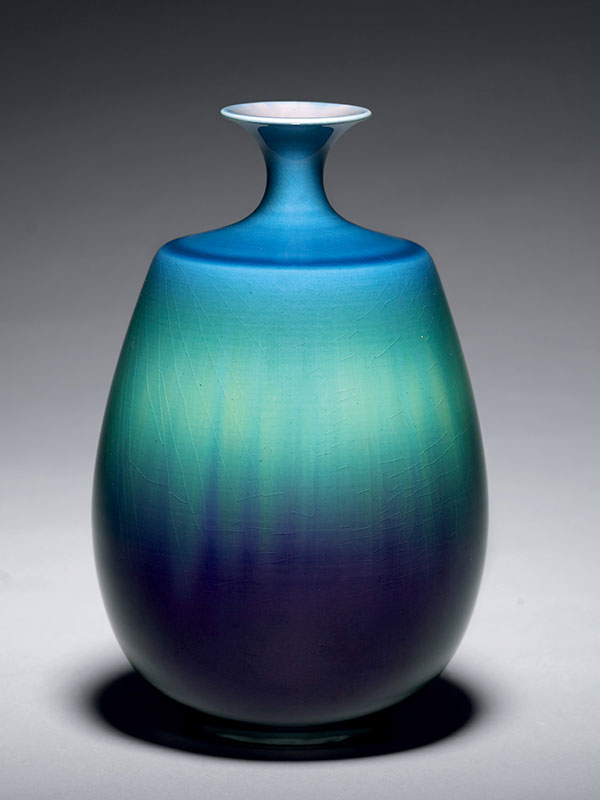Porcelain bottle vase by Tokuda Yasokichi III
An elegantly potted porcelain bottle vase, the rounded body supported on a low foot. The sides taper in towards the top and are surmounted by an upwards sloping shoulder, a short cylindrical neck and a widely everted rim. The exterior is covered in streaked blue, green and purple glazes, leaving the inside and the base glazed white. The recessed base is painted in red with the signature of Tokuda Yasokichi III. Contained within the original tomobako, inscribed with the signature of the artist.
Tokuda Yasokichi III was one of most famous Kutani potters. Born in 1933 in Ishikawa prefecture, he was designated a Living National Treasure in 1997
for his mastery of the saiyu jiki glaze technique. Typical of his work is the technique of carefully applied coloured glazes (saiyu jiki), the effect of which is true to the traditional aesthetics of Kutani wares, but also looks modern and is memorable. He developed techniques handed down from his grandfather, Tokuda Yasokichi I (1873 – 1956) and later his father, Tokuda Yasokichi II (1907 – 1997). In 1963 Tokuda Yasokichi III exhibited both at the Asahi Ceramics exhibition and at the Nitten. Since 1975 he has mainly exhibited at the Japan Traditional Crafts exhibitions. He has received many prestigious awards, such as the NHK Chairman’s prize, the Excellence Award and the Outstanding Award from the Japanese Crafts Association. Yasokichi III’s works have been recognized widely. Examples of his work are in many museums in Japan, including the National Museum of Modern Art in Tokyo[1] and also the Victoria & Albert Museum in London.[2]
- The National Museum of Modern Art ed., A New Guide to Modern Japanese Craft Arts, The National Museum of Modern Art, Tokyo, 2015, page 72.
- Irvine, G. ed., Japanese Art and Design, V&A Publishing, London, 2016, no. 154, p. 209

